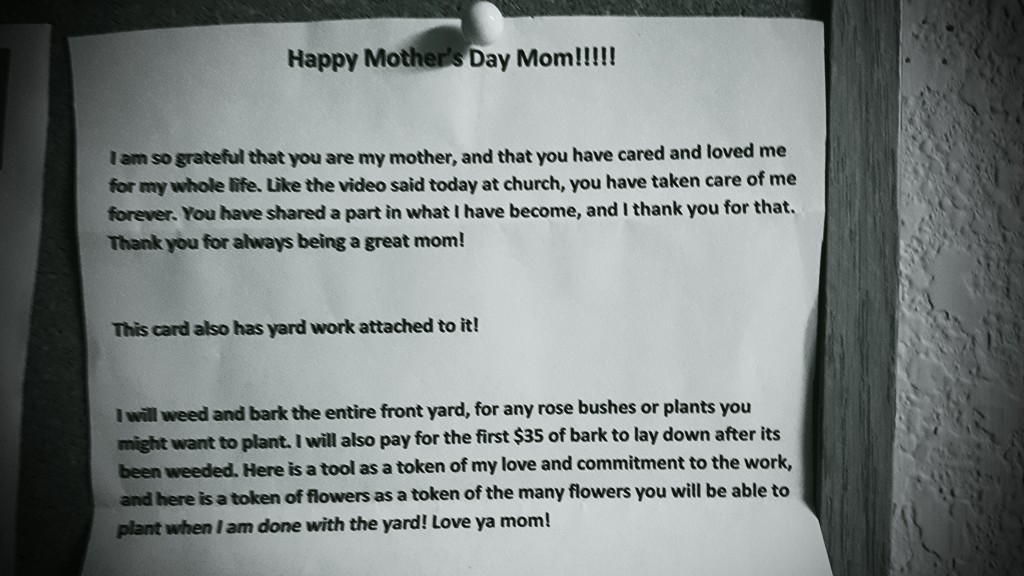When we first moved to this house, there was a working hot tub. We enjoyed it quite a bit that first year, but after a while, we found we were using it less and less.
Finally, we decided to stop using it altogether. It was too hard to keep the chemicals balanced, and the power needed to keep it heated seemed to be more than we wanted to pay (utilities in the ‘city’ were a lot more than we were used to paying in the country).
For years, it sat idle, unplugged and empty. Raccoons made use of the base as a den, and chewed the insulation into nuggets for bedding. I’m sure it was a very cozy place to live, but their odor was a bit repellent. It isn’t uncommon for people who buy a home to find out that either the old house that they are buying has no insulation, or it isn’t well insulated. While this can be a nasty surprise, it is something that can be relatively easy to correct. It doesn’t even have to be all that expensive, and the money you spend to buy the insulation will mean great savings on your energy bills. One of the easiest ways to fix insulation problems is to use blow in insulation. Compressed insulation is put through a blowing machine to fluff it up and make it more effective. It can be blown through a hole in a wall in order to add insulation where there wasn’t any, or it can be blown into an unfinished attic to add insulation (or more insulation, if needed). Many times a special type of blanket is put down and the blow in insulation is blown in through a slit to keep it from going where you don’t want it. Then you just seal the slit and your insulation is contained.
Professionals have the best equipment and enough experience to do these types of jobs quickly and easily. But if you are a do-it-yourself type person it is also possible to rent the proper equipment and purchase the blow in insulation so you can do this project on your own. You can find instructions on the internet if they don’t come with the insulation or equipment. The owens corning blown in attic insulation comes in four different types: fiberglass, rock wool, cellulose, and vermiculite. The fiberglass insulation has the best insulation properties, so you will need less of it than the other types, although it is a bit more expensive usually. Both Owens Corning and Johns Manville sell this type of insulation. Cellulose insulation is sometimes put on top of fiberglass insulation in order to take advantage of the best properties of each type. It is also used alone, though it does take more of it to get the same effect as you would with fiberglass. Newspaper is treated so that animals and pests are less likely to use it or try to eat it, as well as to make it more fire resistant, in order to make this type of insulation. Insulating your loft will result in significant energy savings, and therefore you can expect to reduce your energy costs dramatically as a result. A huge amount of heat leaks out of your roof if the loft is not insulated, around 30% of heat that you have already paid for.
Loft Insulation is relatively easy to do. If your loft is not already insulated, the cost should be about £275 for the insulation material. Once installed however, you’ll save approximately £200 per year in reduced heating costs. Therefore, only 18 months later, the cost of the project has paid for itself in lower energy bills, and every year after that, you’ll be saving a significant amount of money on heating costs.
It is recommended that the minimum thickness of Loft Insulation should be 200mm.
Mineral Fibre or Fibreglass matting comes in rolls of either 100mm or 200mm thick, the thinner 100mm version being used to lay over existing, older, and therefore usually thinner insulation. This type of insulation is most often used by homeowners confident enough to undertake the work themselves. However, great care should be taken, and the issue of whether to install yourself or hire a qualified fitter is discussed below.
An alternative is loose-fill loft insulation, which is used where the spacing between joists is irregular, or in places where it is difficult to reach to install roll-based insulation. In both cases, the job of installation may not be quite as easy as first thought. The depth between joists is often lower than the recommended depth of insulation, and some initial preparatory work will therefore have to be completed. This is often achieved by raising the height of the joists with additional timber to the required depth.
It’s quite a precarious position up there in the loft, and very easy to overbalance.
Joists are very narrow to walk on, in fact, you shouldn’t attempt to walk on a single joist at all, but instead cover the area in boards resting on the joists on all four sides, to distribute your weight more evenly. Of course, ladders can be quite dangerous, particularly in the often small and dimly-lit conditions of a loft.
There are also hazards in laying the insulation itself, For instance, Mineral Wool insulation can irritate your eyes and throat, and protective clothing should be worn at all times to avoid contact with the skin.
Considering the above, I would recommend using a professional to do the work for you. You will incur additional expense, but when you consider the considerable savings you’ll be making on your heating bills, it’s well worth getting the job done properly and safely.
And anyway, it’s all about how to save energy, right? If you can afford to, get someone else to do it!
Solid Wall Insulation – Internal Insulation
Plaster board laminate insulation is up to 90mm thick, and is fixed directly to the internal wall. Alternatively, you can fix wooden battens to the wall, infill the gaps between them with insulating material, and then plasterboard the whole construction over the top.
Both these Solid Wall Insulation methods are likely to be costly however, and are fairly large projects inevitably leading to some disruption in the living area.
Instead, flexible internal linings are easier to install, almost like hanging wallpaper. They are substantially thinner and can be painted, wallpapered or even tiled over afterwards.
Solid Wall Insulation – External Insulation
External wall insulation should be between 50mm and 100mm thick, and is usually applied in cases of severe heat loss, and where the application of an exterior rendering material may improve the appearance of a damaged wall.
The cost of exterior wall insulation is around £1800 for a 3 bedroomed, semi-detached house, but this would save you about £290 to £350 per year in heating costs.
You should also consider that a typical radiator loses 70% of the heat it produces through the wall behind it. Fitting heat-keeping radiator panels will save a great deal of heat produced, and apart from the drop in costs, the room will warm up much quicker.
Cavity Wall Insulation
If your house was built after 1930, and the thickness of your walls is at least 26.5cm thick (10.5 inches in old money), it’s likely that you have cavity walls.
However, this can be checked by a local cavity wall insulation installer.
If you do have cavity walls, the procedure is very simple. The insulation material is injected into the walls from outside, so there won’t be any mess to clear up afterwards, and it will only take about 3 hours to insulate an average-sized, 3 bedroom semi-detached house. Furthermore, if you hire a professional to do the work for you, it should be guaranteed for 25 years.
It’s a relatively easy job, and you’ll notice the benefits all year round, for instance, even temperatures around the house, less condensation, and moderate room temperatures during a hot summer.
This project will set you back about £260, but as you save energy costs, you’ll find yourself paying up to £160 less each year on your heating bills.
Water Tank and Pipe Insulation
Water Tank Insulation requires that the water tank jacket is at least 75mm (3 inches) thick. An insulation jacket costs about £19, but that will save you about £20 per year in heating costs. Insulating hot water pipes is a relatively straightforward way to save energy, but you’ll have to lift the floorboards to get at them in most cases. Therefore, insulating the floor afterwards is a good idea.

The styrofoam cover was full of water, must’ve weighed 400+ pounds.
Now we’re removing it. I bought a reciprocating saw, and I hope to chop it into chunks that can be transported to the dump or otherwise disposed-of. The spa-removal company wanted $250 to take it away, plus dump fees. I just wasn’t willing to pay that … so instead, I spent $80 on a reciprocating saw, and I’ll chop it into pieces. By the time the dust settles, I’ll probably ‘earn’ about $2.00/hour for the time that I’ll need to get rid of this monstrosity.
But at least I will now own a reciprocating saw, which has been a long-time desire.
Project 365, Day 156
Tim
Related posts:




